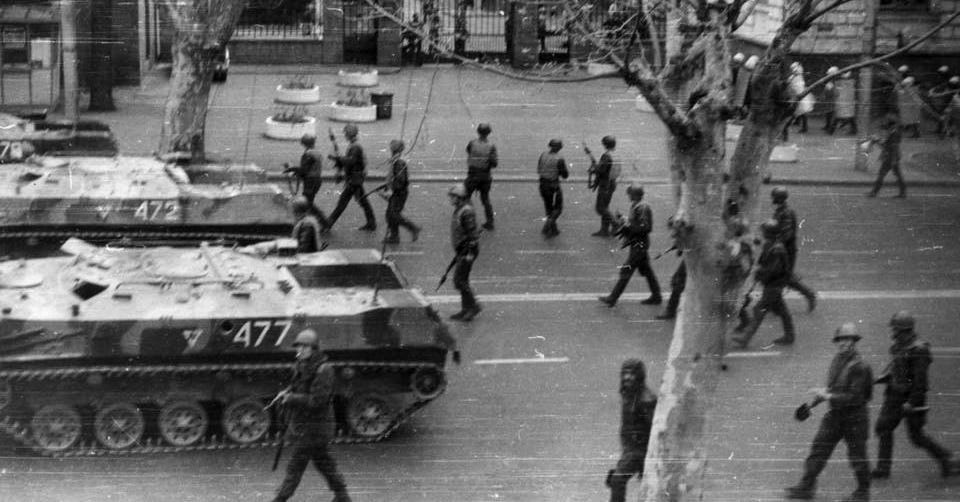

The Embassy of Georgia hosted a Commemoration Ceremony to honor the victims of the Soviet Army’s April 9, 1989, bloody crackdown on peaceful demonstrators in Tbilisi, which triggered the Beginning of the End of the Soviet Union some 30 years ago.
GEORGIA, one of the most freedom-seeking republics within the Soviet Union, had seen numerous protestors who stood for independence killed by the Soviet army. However, the peaceful demonstration calling for the restoration of Georgia’s independence in April 1989, eventually led to the declaration of Independence of Georgia from the USSR, a subsequent chain of pro-independence movements in other Soviet and Warsaw pact republics, leading to the fall of Communism.


The 1989 April protests reached their peak on April 4th, when tens of thousands of Georgians gathered in front of the House of Government on Rustaveli Avenue in Tbilisi. The protests were a peaceful demonstration and hunger strike which demanded the punishment of the Kremlin-orchestrated secessionist movements in the Russian occupied regions of Georgia and the restoration of Georgia’s independence which was lost in 1921.
On the eve of April 9, 1989, Soviet troops surrounded the demonstration area and advanced on demonstrators moving along Rustaveli Avenue. Soviet troops attacked protestors with CN/CS gas, military batons and spades, chopping to death 19 people, which included 17 women and a high school girl as young as 16. The death toll later increased to 21 people.


The April 9th massacre radicalized Georgian opposition to Soviet power. Seven months later, the Supreme Council of the Georgian SSR officially condemned the occupation and annexation of the first Democratic Republic of Georgia by Soviet Russia in 1921.
On April 9 of 1991, Georgia declared its independence from the Soviet Union.
The Tbilisi uprising and massacre led to a chain reaction in the Communist Block including similar events such as the Baltic Chain of Freedom in August 1989, the fall of the Berlin Wall from November 1989, the tragic massacre in Baku/Azerbaijan in January 1990 and in Vilnius/Lithuania in January 1991. The USSR fell and ceased to exist on December 26 of 1991, ending the Cold War.
During the Commemoration Ceremony Ambassador David Bakradze and U.S. Deputy Assistant Secretary George Kent recalled their memories from those tragic days. Father Pavle held a service in honor of the heroes, who led the way to our freedom some 30 years ago.


Ambassador David Bakradze remembered himself as a teenager attending Public School #1 in Tbilisi sitting on the central avenue where on that fateful April day, Soviet troops assaulted his countrymen in order to crush Georgians thirst for freedom: “I’m not certain that I entirely understood the gravity of what had happened at that moment, but we did know it was part of what was occurring in countries around Georgia. The unmistakable context was of captive nations rejecting Russia’s disintegrating empire. I now see that the events of that terrible April 9th reflected a chain reaction in the Warsaw Pact and Soviet Union nations.”
Ambassador David Bakradze remembers the victims of Soviet oppression who fought for our freedom 30 years ago at his letter to The Washington Post


